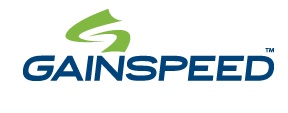Gainspeed IDs ‘Virtual’ CCAP Tech Partners

Gainspeed, the startup sparked by DOCSIS pioneer Shlomo Rakib, continues to develop a “virtual” version of a Converged Cable Access Platform (CCAP) in relative secrecy, but new documentation shows that it isn’t blazing the path toward an all-IP future alone.
In Web pages brought to light on Thursday (March 20), Gainspeed identified four initial vendors that it will partner with on the development of an interoperable virtual CCAP ecosystem: Juniper Networks, CommScope, Netgear and JDSU.
Coincidentally, CableLabs, which handles interoperability specs for the industry, has begun to explore vCCAP, with the publishing of a technical report on the subject expected later this year. CableLabs has not yet decided if it’s necessary to create new specs for virtual CCAPs.
Gainspeed has not yet released or announced when it will release an actual product, but the information posted today also presents more detail on its vision for a virtual CCAP architecture and the market forces that are driving the industry toward it.
Gainspeed’s Tech Team
-Juniper’s involvement isn’t a big surprise, as its VC arm headed up a $10 million “B” round in Gainspeed late last year. But the info released today sheds more light on how the two companies will be working together, as they will team on virtualizing the cable headend by disaggregating the cable modem termination system (CMTS), with the aim of “centralizing control in the cloud and distributing processing to the edge of the network.”
-CommScope, meanwhile, will pitch in to help Gainspeed structure a virtual CCAP that taps CommScope’s “all-digital” hub architecture, which aims to reduce space and power requirements. It’s an intriguing link-up, because CommScope has already developed a non-routing (downstream-only) CCAP-based product that is starting off as a super-sized edge QAM, with upstream components to be added later. CommScope told Multichannel News earlier this month that it was working on a vCCAP; its connection to Gainspeed offers further evidence on how it will proceed.
Multichannel Newsletter
The smarter way to stay on top of the multichannel video marketplace. Sign up below.
-Netgear, a supplier of DOCSIS modems and all-service cable gateways, is Gainspeed’s first announced partner on the customer premises equipment end of the network. According to Gainspeed, Netgear’s on board to develop DOCSIS 3.0 and DOCSIS 3.1 CPE that interoperates with Gainspeed’s vCCAP.
-JDSU, a top cable test and measurement firm, will develop test tools that can work in Gainspeed’s virtualized environment.
Gainspeed’s Virtualized Vision
Gainspeed won’t be alone in developing vCCAPs, as competitors, including Arris and Harmonic, have efforts underway. But Gainspeed is gunning for a vCCAP architecture from the start, and is now starting to publicize its approach and a lofty goal of delivering “Ethernet to the node on Day 1.”
Gainspeed said it’s building a vCCAP platform that will be distributed and use software-defined networking (SDN) and network functions virtualization (NFV) in hopes of centralizing network management in the data center and plugging into software many functions that have historically required more monolithic, purpose-built hardware.
According to Gainspeed, the CMTS is in that category. In a claim that will surely put a bit of a scare into the current CMTS market, Gainspeed said its approach “literally eliminates the CMTS as a physical box and reorganizes the network at a functional level.”
The vendor claims this is necessary because the cable infrastructure has reached a “tipping point,” arguing that cable’s access network must evolve in order to achieve the kind of capacity and financial scale required as cable relies less and less on edge QAM capacity, and continues to migrate all services, including video, onto an IP infrastructure.
Gainspeed said its architecture distributes both the DOCSIS MAC and DOCSIS PHY to the fiber node, enabling “full spectrum DOCSIS,” which also happens to be a long term goal of DOCSIS 3.1, a new CableLabs spec that envisions capacities up to 10 Gbps down and 2 Gbps upstream. The approach will “address the huge increase in cable network capacity required by the radical shift in traffic from QAM video to IP Video,” the company said.
While this sheds light on Gainspeed’s plan, they are marketing claims, since Gainspeed has not announced an actual product nor said when it will be ready to launch one. However, Gainspeed did offer private demos of a prototype at the SCTE Cable-Tec Expo in Atlanta last fall that was supporting live network traffic, according to people who witnessed it.
Gainspeed’s plan, or at least its claims that a virtualized architecture represents a near-term need for the cable industry, will be a hot topic of debate within the industry in the months ahead.
While vCCAPs are on the radar of most vendors already in the market, many suppliers believe today’s CCAPs are the right tool for the job today, and the need to go to a more virtualized architecture is further out on the horizon.
In a recent interview with Multichannel News, Steven Krapp, the CMTS product management director at Arris, said its studies show that serving 200 service groups off a CCAP represents the “breaking point” for a virtualized architecture. Arris’s CCAP-pointing product, the E6000, is currently capable of handling 56 service groups per device, with 72-plus on the roadmap as cable operators execute more node splits.
